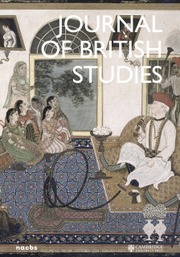The recent chance rediscovery of a book from my childhood reminded me of what began my lifelong fascination of the Wars of the Roses. It was a biography of Warwick the King Maker, one of a series of “great men” histories for children, published in 1966. Warwick, contrary to most modern academic studies, is presented as the wronged hero, but what is more relevant for this review is the book's depiction (including illustrations) of Margaret of Anjou, queen consort of Henry VI. Margaret is described as violent, cruel, and treacherous, and aptly named the “she-wolf” of France. Our understanding of Margaret has progressed considerably since the 1960s, in large part due to the work of the editors of The Letters of Margaret of Anjou, Helen Maurer and B. M. Cron, who, over the past twenty or so years have provided a significant reevaluation in the form of a more subtle and nuanced understanding of her role as queen in a period of civil war and dynastic struggle. It is therefore difficult to think of two more qualified historians to provide a much-needed new edition of letters to, from, and about Margaret.
The short introduction briefly outlines the course of Margaret's life, the historiography, and the rationale for presentation of the letters. The book is then organized into two main sections that reflect the current understanding of Margaret's role. Although there is some chronological overlap between the two parts, part one, “The Great and Good Queen” (7–170), broadly runs from her arrival in England as Henry's queen in 1445 until her husband's first mental lapse in 1453. This section is broken down into eight topics reflecting Margaret's conventional activities as queen, such as in matchmaking, managing her business affairs, and hunting. These topics, described as “normalcy as her position as queen” (2), reflect that until c. 1453, Margaret fulfilled the expected roles of a late medieval English queen and consort. The division of her letters in this volume reflect this “normalcy.” Part two, “Political Queen” (171–280), includes letters overtly political in nature and reflecting what the editors argue are letters that no other English queen could have written because of the unique circumstances in which Margaret found herself from the mid-1450s onward. This second part begins chronologically with letters by Margaret to Charles VII of France in the mid-1440s. Then the three remaining topics cover her increasing role in politics beyond what was expected of an English queen, from the mid-1450s until the final letter in the collection written shortly before the death of her son, Prince Edward, at the battle of Tewksbury in 1471. One final point regarding the structure of the letters is that it not only enables the reader to focus on specific areas of Margaret's life, but it easily facilitates research by those with a wider focus than just Margaret's life.
At its core are the 122 letters, the vast majority of which are written by Margaret. They also include some letters that are about her and these shed invaluable light on her actions and motivations. Most are presented in the original Middle English, and when not—such as the six letters in French by Margaret to Charles VII—a translation is provided in addition to the original text. Given that the letters have been available in a previous edition for well over a century, it is reasonable to ask what makes this collection worth purchasing. The answer lies in the detailed context and analysis provided for each letter. Given the breadth of the topics addressed, this is in itself a considerable feat, and it will undoubtedly prove to be invaluable to students and academics alike.
Many of the letters will be familiar to readers, but some of the most rewarding are those on areas removed from the bitter struggle Margaret was drawn into from the mid-1450s. The section in part one titled “The Queen's Disport” (158–70) details in eight letters what appears to have been Margaret's genuine love of aspects of hunting. One of the letters (No. 86, p. 161) possibly suggests that Henry VI may have also hunted, a view that is in stark contrast—as Maurer and Cron point out—to the views of John Blacman, Henry's confessor.
It is hard not to be drawn to Margaret's effective leadership of the Lancastrian cause. As invaluable as the letters by Margaret herself are, observations on her plight by third parties can be just as revealing. One such letter by Pierre de Brezé, a childhood servant of her father, Renee of Anjou, and later a close councilor of Charles VII, illustrates the potential dangers and delicate tightrope Margaret had to tread in seeking support from Charles VII. This letter and similar others are of obvious relevance to our understanding of Margaret's leadership, but also shed light, in this instance, on the complexities and nature of international relations and diplomacy.
Whether or not any still hold on to the view of Margaret of Anjou from my childhood history book—that she was violent, cruel, and treacherous—is open to debate. But what is surely not debatable is that she was a remarkable woman who was compelled to take the role of a de facto female sovereign for which England was not yet ready for one. Margaret, of course, did not exist in a vacuum; her life was shaped by her circumstances and the male-dominated political structures within which she found herself. But Margaret is central to any study of the Wars of the Roses, and her remarkable letters are therefore key to understanding both her and her actions. As previously mentioned, the letters in critical edition are not new, but the new editors’ detailed and knowledgeable commentary on each are alone a strong recommendation for this edition.



